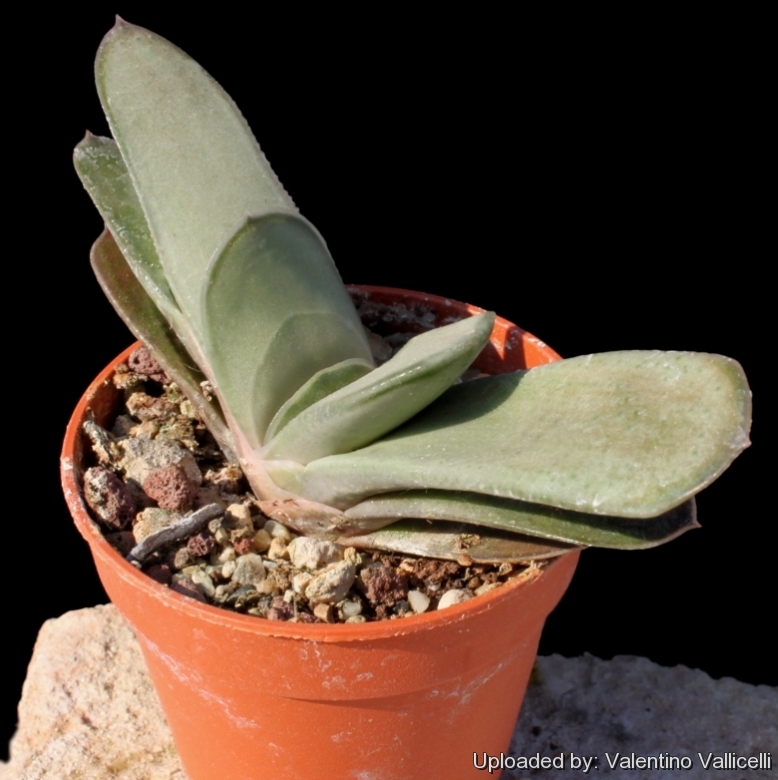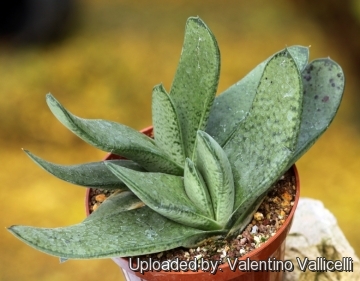
Gasteria gracilis Photo by: Valentino Vallicelli
Origin and Habitat: Distribution: Natal (South Africa)
Synonyms:
See all synonyms of Gasteria gracilis
back
Accepted name in llifle Database:Gasteria gracilis BakerJ. Linn. Soc., Bot. 18: 193. 1880 [1881 publ. 1880]Synonymy: 2
Cultivars
(1):
back
Description: Gasteria gracilis is not currently considered a valid species, this species was described a long time ago with no preserved samples, and therefore, botanically it does not exist, but is a very real plant, however. One problem with Gasteria is that there are so many hybrids between species seedling variability, and differences between juvenile and adult plants, that it becomes almost impossible to distinguish many forms from one another. Particularly the name gracilis is used for wildly different forms and can cause confusion.
Habit: Acaulescent.
Rosettes: 5-7 cm in diameter, stemless with basal leaves.
Leaves:Distichous. 9–10, Fleshy, fat, lanceolate, to pillowy, tongue-like. Smooth, shiny, green, green speckled or pale greysh-green but very variable in different clones.
Flowers: Small up to 2 cm, pendulous, tubular, bicoloured reddish-pink and green that look like little stomachs. The inflorescence can be branched and tall.
Blooming season: Flowers can be produced any time of year, peaking in midwinter to spring.
Subspecies, varieties, forms and cultivars of plants belonging to the Gasteria gracilis group
 Gasteria gracilis Photo by: Valentino Vallicelli
Gasteria gracilis Photo by: Valentino Vallicelli Gasteria gracilis Photo by: Valentino Vallicelli
Gasteria gracilis Photo by: Valentino VallicelliCultivation and Propagation: They are of easy cultivation, which makes them a good houseplant, and can be an excellent subject for the beginning gasteriaphile (it can grow easily on window sills, verandas and in miniature succulent gardens where they are happy to share their habitat with other smaller succulent plants, or in outdoor rockeries). The plant needs light shade to shade, but will take full sun part of the day. (with some sun exposure the leaf develops a nice reddish tint and remains compact) They are tolerant of a wide range of soils and habitats, but prefer a very porous potting mix to increase drainage. During the hot summer months, the soil should be kept moist but not overly wet. The plants are fertilized only once during the growing season with a balanced fertilizer diluted to ½ the recommended strength. During the winter months, water only when the soil becomes completely dry.
Propagation: Gasteria is easily propagated by the removal of offshoots or by leaf cuttings in spring or summer. To propagate by leaf cuttings, remove a leaf and let it lie for about one month, giving the wound time to heal. Then lay the leaf on its side with the basal part buried in the soil. This leaf should root within a month or two, and small plants will form at the leaf base. They can also be grown from seed.












